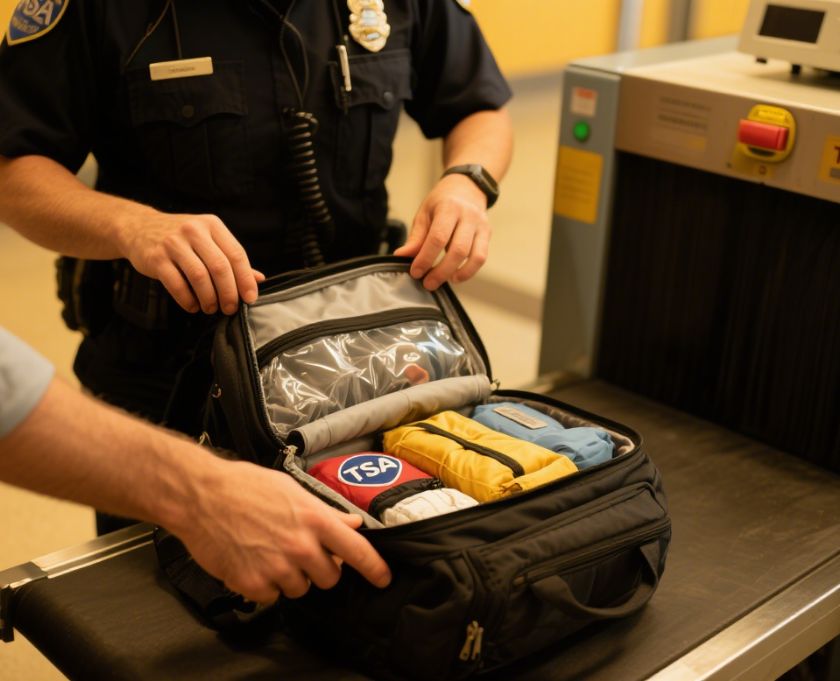Beautiful Plants For Your Interior

If you’ve embraced minimalist travel, chances are you’ve considered using a vacuum compression backpack to cut down bulk. These ultra-efficient packing systems allow travelers to shrink clothes into neat bundles, freeing up room and reducing checked luggage. But one question lingers for many globetrotters: Is a vacuum compression backpack TSA-approved for carry-on or checked luggage?
Let’s unpack what TSA and airlines actually allow—and how to use these travel hacks without getting flagged at airport security.
What Is a Vacuum Compression Backpack, Exactly?
It’s not a brand or a single item. Rather, it’s a travel strategy: using vacuum-seal bags to compress clothing and gear inside a carry-on-sized backpack. Popular types include:
- Hand-roll compression bags (most TSA-friendly)
- Electric or manual pump vacuum bags (less convenient for travel)
- Built-in compression zip backpacks (like the Tortuga or Nomatic series)
The idea is simple: minimize volume, carry more, and travel light.
TSA Guidelines: What You Can and Can’t Bring
TSA doesn’t explicitly ban compression bags or certain backpack types, but it does enforce rules that apply indirectly:
- Carry-on Size: Your packed bag must fit airline limits (typically 22x14x9 inches).
- Visibility: TSA may need to inspect your items. Transparent compression bags help here.
- Liquids Rule: Same 3-1-1 rule applies—under 100ml per item, all inside one clear quart-size bag.
- Ease of Access: You may be asked to unzip, unroll, or unpack anything for inspection.
Are Compression Bags Allowed on Planes? Yes, But…
Yes, TSA allows vacuum compression bags in both carry-ons and checked luggage. But there are a few caveats:
- Avoid fully sealed or opaque bags: They can delay security if TSA can’t see inside.
- Hand-roll bags are preferred: No pumps, batteries, or electronics to raise red flags.
- Overstuffing can cause suspicion: A rock-solid brick of clothing looks suspicious on X-rays.
So the real rule? Compress smart, not excessively.
Personal Experience: Getting Through TSA With a Compression Pack
During my recent LAX to JFK flight, I used two hand-roll compression bags inside a 30L backpack. TSA flagged my bag, but here’s how it went:
- They quickly unzipped my pack and saw clear bags with clothes.
- No pump, no electronics = no problem.
- One officer said, “We just need to check it’s not something pressurized.”
I was through in under two minutes. Lesson learned? Transparency and accessibility make all the difference.
Best Practices for TSA-Friendly Packing with Compression Bags
| Tip | Why It Matters |
|---|---|
| Use transparent or semi-transparent bags | Easier visual inspection |
| Don’t overstuff or make bricks | Avoid suspicion or rescreening |
| Skip electric pumps | Batteries can cause scrutiny |
| Keep liquids in the 3-1-1 bag | TSA still enforces this rule |
| Roll instead of fold | More even compression and wrinkle prevention |
Can I Check a Vacuum Compression Bag?
Absolutely. In fact, many travelers use vacuum bags to shrink bulkier items like winter coats or bedding in checked luggage. However:
- Use durable bags to prevent punctures during loading.
- Avoid sealing liquids inside—pressure changes can rupture bottles.
- Leave one or two bags slightly unsealed in case TSA wants to inspect without tearing them open.
Are All Airlines Okay With Compression Bags?
Yes, but carry-on policy varies. Here are a few airlines and their approach:
- Delta, United, American: Standard size limits apply. Compressing items inside a bag is fine.
- Southwest: Known for generous carry-on allowances.
- Budget airlines (Spirit, Frontier): Be sure compressed bags fit personal item size (often smaller than carry-ons).
Always check your airline’s carry-on dimensions before flying.
FAQs
Can compression bags explode on a plane?
Not if used properly. Hand-rolled bags won’t expand due to cabin pressure. Avoid compressing sharp items or liquid-filled containers.
Can TSA force me to open a sealed bag?
Yes. If they can’t see what’s inside or are unsure about contents, they may ask you to open it or even cut it open.
Are electric pumps allowed in carry-ons?
Technically yes, but small battery-operated devices could trigger additional screening. It’s best to leave them behind.
Is it worth compressing for short trips?
Definitely. Even weekend travelers benefit from neat, space-saving packs—especially with low-cost airlines.
Does TSA care about how I pack?
Not really. But they care whether they can easily inspect and verify the contents. That’s why visibility and accessibility matter most.
Can compression bags wrinkle clothes badly?
Somewhat—but hanging them in a steamy bathroom or packing wrinkle-resistant fabrics can help.
Conclusion: Yes, You Can—Just Pack Smart
Vacuum compression backpacks are TSA-compliant when used correctly. Stick to hand-roll bags, pack items neatly and visibly, and avoid adding questionable tools like pumps. You’ll breeze through security and enjoy a lighter, more organized trip.
Travel isn’t about carrying more—it’s about carrying what matters. With the right packing technique, your minimalist dreams can fly high—literally.